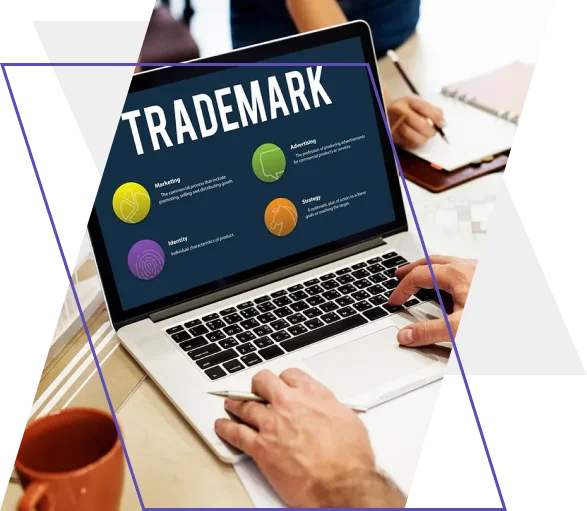what is Trademark ?
In the competitive business landscape, creating a distinct identity is essential. A trademark serves as a vital instrument for safeguarding this identity. It can take the form of a symbol, word, phrase, logo, or a mix of these elements that uniquely identifies a product or service. In essence, a trademark acts as a brand marker, distinguishing your products or services from those of others in the market. Examples include the Nike swoosh, the Apple logo, or the slogan “Just Do It.”

Types of Trademarks
- Word Marks: Words, letters, or numbers, like Coca-Cola and Google.
- Design Marks: Visual elements such as logos or symbols, exemplified by the Nike swoosh and Apple’s bitten apple.
- Combined Marks: A combination of words and design elements, such as McDonald’s golden arches with the brand name.
- Slogan Marks: Memorable phrases identifying a brand, like Nike’s “Just Do It” or McDonald’s “I’m Lovin’ It.”
- Product Packages: The overall appearance and feel of a product or packaging, like the shape of the Coca-Cola bottle.
- Sound Marks: Distinctive sounds associated with a brand, such as the Intel jingle.
- Color Marks: Specific colors linked to a brand, like Tiffany blue or UPS brown.
Benefits of Trademarks
- Legal Protection: Registered trademarks provide protection against infringement and grant exclusive rights for use within the specified class. The “TM” symbol is used after an application is filed, while the “®” symbol is used once registration is complete. Unauthorized use can be legally challenged.
- Product Differentiation: Trademarks set your products apart from competitors, aiding customers in identifying and selecting your brand. This creates a unique presence in the market.
- Brand Recognition: Trademarks boost brand recognition and build goodwill, encouraging customer loyalty and attracting new clientele by linking your brand with quality and performance.
- Asset Creation: Trademarks are valuable intangible assets that can be sold, franchised, or otherwise commercially utilized. They have accounting and tax value, and their costs can be documented in financial records.
- Business Valuation and Goodwill: Registered trademarks enhance business value, goodwill, and net worth. They signify quality assurance and contribute to business growth by maintaining customer loyalty.
- Trademark Recognition: Valid for ten years and renewable, trademarks registered in India can support international registrations, aiding in global business expansion.
Process of Trademark Registration
- Trademark Classification: Use the NICE Classification System, which consists of 45 classes for goods and services, to determine the scope of protection and usage for the trademark.
- Trademark Search: Conduct an extensive search in both local and international databases to ensure the trademark is unique and free from potential conflicts.
- Trademark Application Filing: File an online application with the relevant intellectual property office, including the applicant’s details, a depiction of the trademark, and the specified class of goods or services.
- Trademark Fees Payment: Pay the necessary fees for processing, examination, and administrative tasks based on the business type and the number of classes involved.
- Trademark Examination: The trademark is reviewed for uniqueness, availability, distinctiveness, and legal compliance. An examination report highlights any objections.
- Replying to Objections: Address any objections within 30 days. If resolved, the application progresses; otherwise, a show cause hearing may be required.
- Trademark Publication: Once approved, the trademark is published in the trademark journal, inviting third-party oppositions. Any objections must be resolved before final registration. The public has 4 months from the journal’s advertisement date to raise objections. If no objections are raised within this period, a registration certificate is issued.
- Settlement of Third-Party Opposition: Handle third-party objections through negotiation, settlement, or legal proceedings. Successful resolution is necessary for the application to proceed.
- Trademark Certification Granted: After resolving all objections, a Trademark Certificate is issued, granting exclusive rights for 10 years from the application date.
- Trademark Renewal: Renew the trademark before the 10-year period expires to maintain protection. The renewal process is similar to the original registration, with no limit on the number of renewals.
Trademarks are crucial assets for any business, providing essential brand protection and helping to create a unique market identity. Properly understanding and navigating the trademark registration process is key to safeguarding your brand’s reputation and ensuring long-term success. Whether you’re a new startup or an established company, investing in trademark protection is vital for developing a robust and lasting brand.


